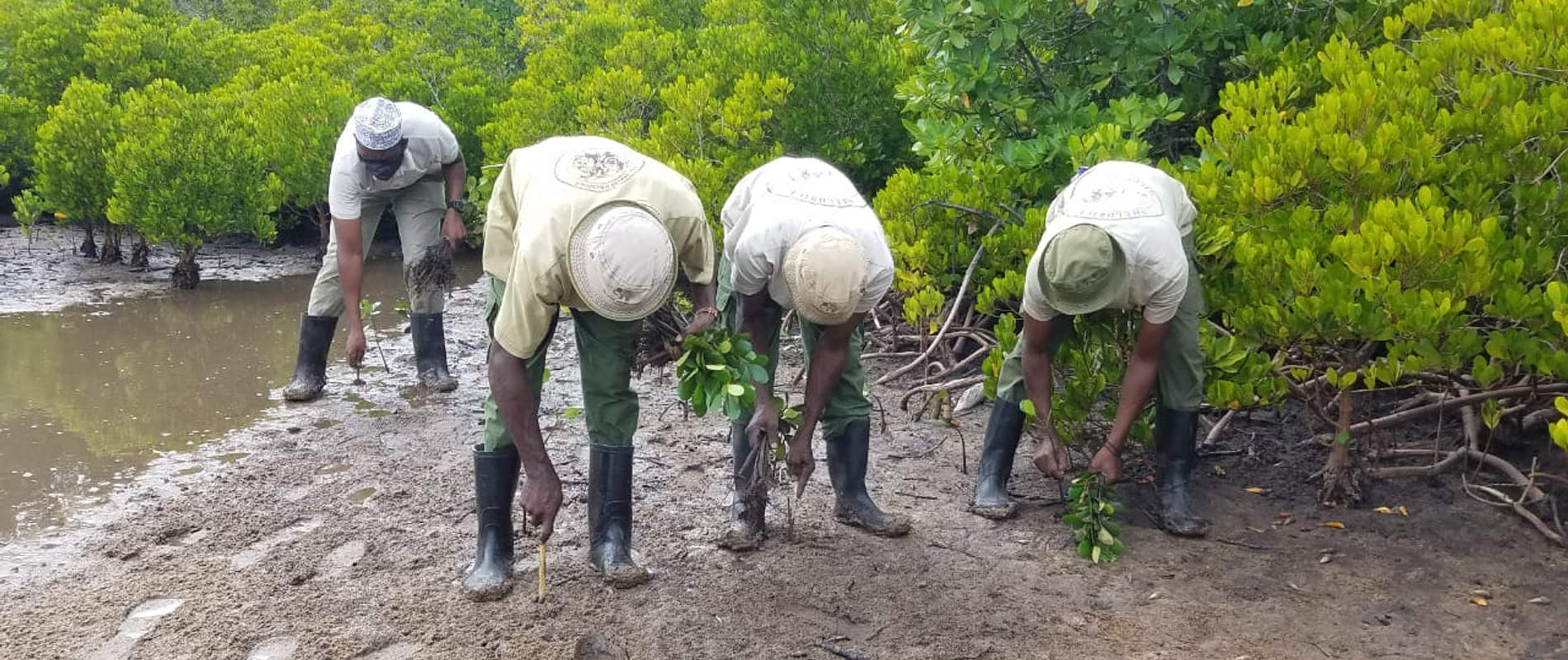The Sheldrick Wildlife Trust is excited to announce a new partnership with Eden Reforestation Projects and Lamu Conservation Trust in Lamu County, which will not only expand our existing tree-planting efforts, but begin the restoration of severely degraded mangrove forests along the coast.
The SWT has been involved in Lamu County for the past decade, working with the Lamu Conservation Trust (LCT) since 2011, and Kenya Forest Service since 2014, to protect over 100,000 acres of pristine wilderness on Amu and Witu Ranch in Kenya's Northern Coast line. Here we have a successful, terrestrial, reforestation project; however, our new partnership with Eden Reforestation Projects aims to not only expand our existing tree-planting efforts, but begin the restoration of severely degraded mangrove forests along the coast.

On Thursday, 2nd July 2020, Eden kicked off the project by planting 6,236 propagules (special mangrove seeds which have already started to germinate on the tree). This was done hand-in-hand with eager volunteers from LCT and Eden’s newest employees, all of whom have been sourced through a local, volunteer-based, Beach Management Unit that has been instrumental in fighting cases of mangrove deforestation in recent years.


Mangroves are important ecosystems in Kenya, producing goods and services of immense importance to the communities living adjacent to them: functioning as buffers between land and sea, while providing protection against extreme weather, including flooding. Their deep root systems prevent soil erosion and serve as a habitat for marine organisms including species of fish and crustaceans, while the canopies provide nesting grounds for birds.
As in other parts of the world, mangroves in Kenya are endangered, having been over-exploited for economic purposes and used for building material and as wood fuel.
We are incredibly excited by this new initiative, which will create employment opportunities for dozens of local people and result in the planting of millions of mangroves. These incredible trees will create new habitats for important fish, crustaceans and birdlife, store massive amounts of carbon, as well as protect this fragile coastline from erosion and the risk of flooding.

